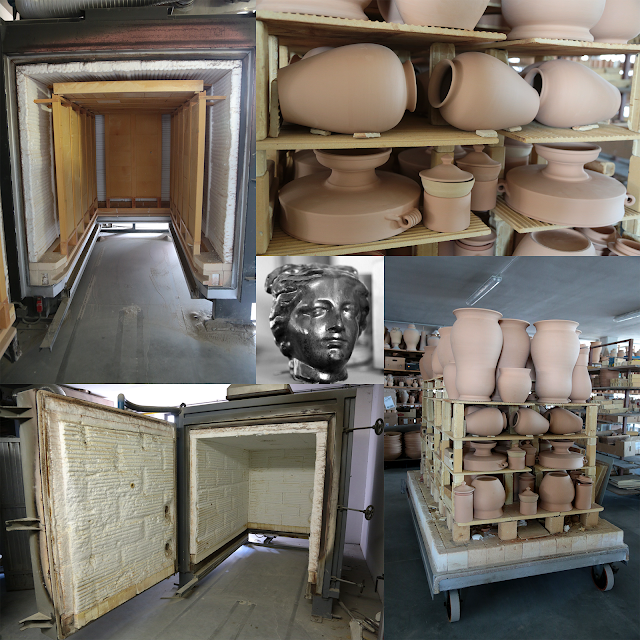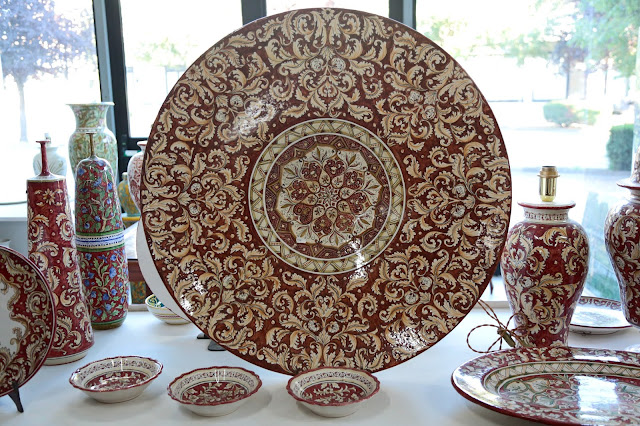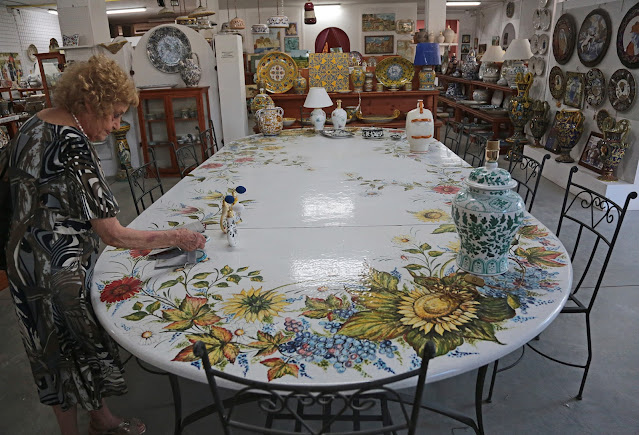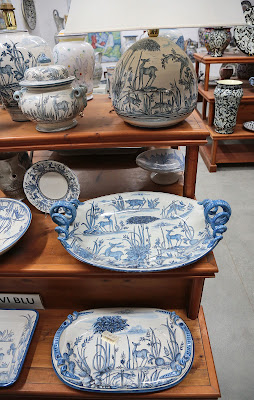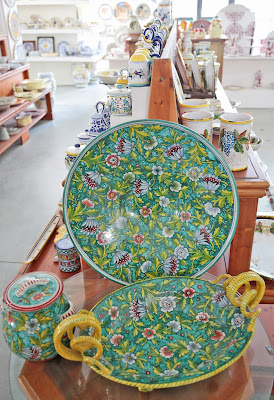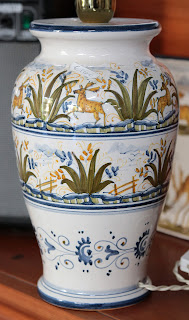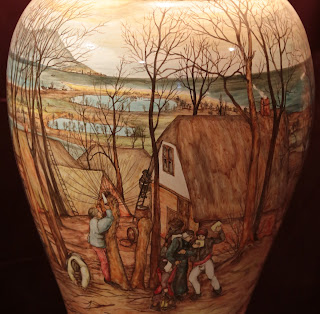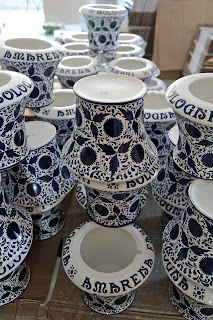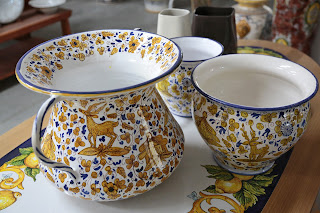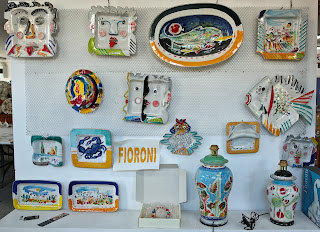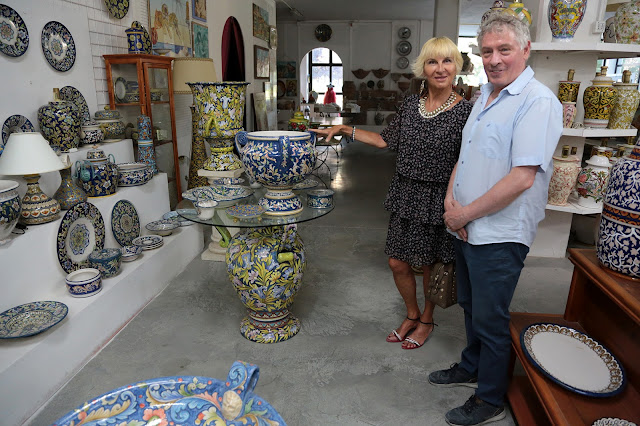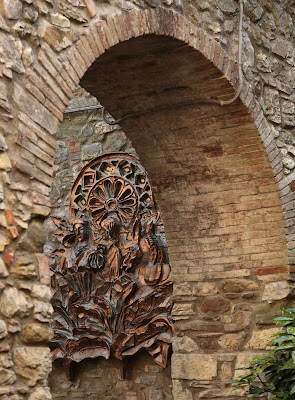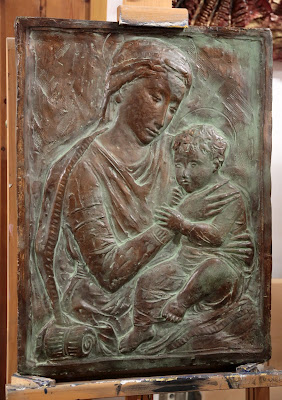Ceramiche d'arte alla MOD di Deruta
Chi non ricorda la celebre scena del film "Ghost" dove Demi Moore modella la creta al tornio?
Ne abbiamo copiato la colonna sonora per trasmettere, come nel film, la magia dell'argilla e il suo prendere forma, come un ripetersi della creazione, e la segreta sensualità delle dita morbide e impositive insieme. Poi la perfezione delle forme ottenute viene fissata nei processi successivi: l'essiccazione e poi la cottura in forno in palchi rigorosamente ordinati proseguono la metamorfosi.
 |
| Modellazione al tornio e applicazione di decorazioni |
Le sale espositive offrono un percorso pieno di tentazioni tra le quali Nicole Kidman ha acquistato quattro servizi di piatti, tra cui il regalo di nozze per sua sorella. Siamo tornati al cinema, dove abbiamo iniziato il nostro articolo, perché quello dà forma suono e movimento ai sogni, e questi oggetti sono fatti della stessa materia.
Link: MOD - Maioliche Originali Deruta
* * *
Clay, Wheel, Colours and Fire
Art Pottery at MOD Deruta
Who does not remember the famous scene from the movie "Ghost" where Demi Moore models clay on the wheel?
We copied the soundtrack to convey, as in the film, the magic of clay and its taking shape, like a repetition of the creation, and the secret sensuality of soft and imposing fingers. Then the perfection of the shapes obtained is fixed in the following processes: the drying and then the baking in the oven in rigorously ordered stages continue the metamorphosis.
At this point the colours, the real protagonists of the creative process, intervene. The pigments are spread on the forms with absolute mastery without any margin for error. The second firing makes them explode and shine.
The firm hand and the consummate technique of Nonno Tonino, the exuberant inspiration of Luciano, the grace of the founder Delia and of the young painters, with the brilliant planning of Grazia and the managerial skills of Ivan are the pillars of the success of the MOD manufactories of Deruta (PG).
The centuries-old beauty of Deruta ceramics has always been part of the taste of every Umbrian and of many Italians who recognize it as a sign of aesthetic and cultural identity. In Deruta the creation of tableware but also of floors and tables has always been supported by the most refined technique in the service of beauty; beauty to be taken home, to be used and lived daily, so that even the normal moments of life could not be trivial. Evidence of this is the Regional Museum of Deruta, where you can explore the history of ceramics and see that since the beginning of the production of artifacts in the Middle Ages there has always been this desire for beauty.
Entering the exhibition halls of the MOD (Deruta Original Majolica) also means retracing the history of art as well as venturing into the future and into creativity.
The stylized grace of the delicately intertwined arborescences and the lightness of the flowering shoots that remove all weight from the objects express the taste and skill of Delia, the progenitor. Delia had founded her company in 1965, which over the years, with the work of her husband Tonino and then of their children Grazia and Ivan, became the current MOD in 1981.
The restoration of the Ovato fountain in Villa d'Este, Tivoli, is an example of the esteem that the MOD company enjoys even in institutions.
The great clients (Fabbri, Sambonet, Missoni, ...) turn to the sumptuous imagination of Grazia which unfolds in princely services such as gold and ruby ??jewels.
The exhibition rooms offer a path full of temptations among which Nicole Kidman bought four sets of dishes, including a wedding gift for her sister. We have come back to the cinema, where we started our article, because cinema gives shape, sound and movement to dreams, and these objects are made of the same material.

